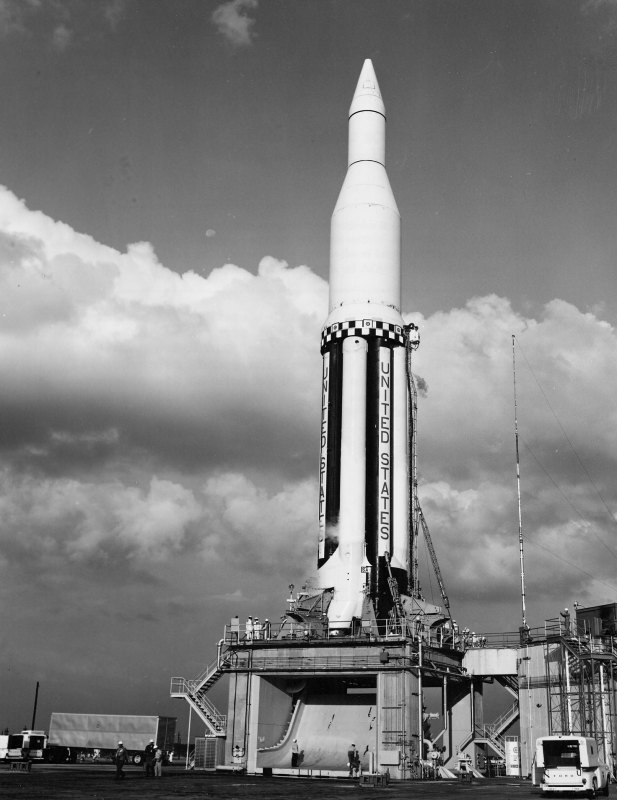
27 October 1961: At 15:06:04 UTC, (10:06 a.m., EST), 3.97 seconds after ignition, the first Saturn C-1 heavy launch vehicle (Saturn I, SA-1) lifted off from Launch Complex 34 at Cape Canaveral, Florida. This was a test of the first stage, only. The rocket’s upper stages were dummies.
At about 109 seconds after liftoff, four inner engines of the first stage shut down, followed 6 seconds later by the outer four. The rocket continued on a ballistic trajectory.
The Saturn C-1 was bigger than any rocket built up to that time. Early versions of the three-stage rocket were 162 feet, 8.90 inches (49.6037meters) tall, with a maximum diameter of 21 feet, 5.0 inches (6.528 meters). The all-up weight was 1,124,000 pounds (509,838 kilograms).
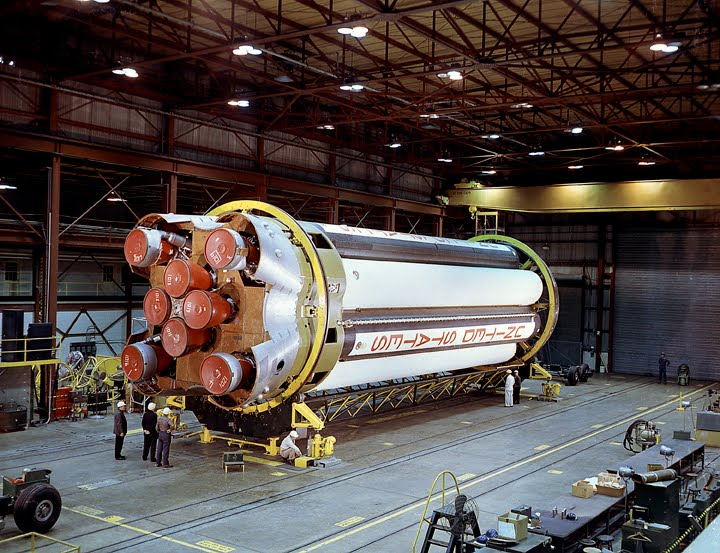
![]() The first stage of SA-1 was built by the Marshall Space Flight Center (MSFC) at Huntsville, Alabama. The S-I stage was built up with a Jupiter rocket fuel tank in the center for liquid oxygen, surrounded by eight Redstone rocket tanks. Four were filled with RP-1 propellant, alternating with four filled with LOx. The first stage was powered by eight Rocketdyne Division H-1 engines rated at 165,000 pounds of thrust (733.96 kilonewtons), each. Total thrust for the first stage was 1,320,000 pounds (5,871.65 kilonewtons). The outer four engines were gimbaled to steer the rocket. (The S-I Block I stage had no fins.)
The first stage of SA-1 was built by the Marshall Space Flight Center (MSFC) at Huntsville, Alabama. The S-I stage was built up with a Jupiter rocket fuel tank in the center for liquid oxygen, surrounded by eight Redstone rocket tanks. Four were filled with RP-1 propellant, alternating with four filled with LOx. The first stage was powered by eight Rocketdyne Division H-1 engines rated at 165,000 pounds of thrust (733.96 kilonewtons), each. Total thrust for the first stage was 1,320,000 pounds (5,871.65 kilonewtons). The outer four engines were gimbaled to steer the rocket. (The S-I Block I stage had no fins.)
The first stage had been test fired 20 times before being transported to Cape Canaveral by barge.
For the first flight, SA-1, the S-!V second stage and S-V third stage were dummies. The S-IV was filled with 90,000 pounds (40,823 kilograms) of water for ballast. The S-V third stage, carried 100,000 pounds (45,359 kilograms) of water. Mounted above the third stage was a Jupiter nose cone.
The Saturn C-1 weighed 925,000 pounds (419,573 kilograms). It contained 41,000 gallons (155,200 liters) of RP-1, a refined kerosene fuel, with 66,000 gallons (249,837 liters) of liquid oxygen oxidizer— 600,000 pounds (272,155 kilograms) of propellants.
SA-1 reached a maximum speed of 3,607 miles per hour (5,805 kilometers per hour), and a peak altitude of 84.813 miles (136.493 kilometers). It impacted in the Atlantic Ocean 214.727 miles (345.570 kilometers) down range. The duration of the flight was 15 minutes, 0 seconds. The flight was considered to be nearly flawless.
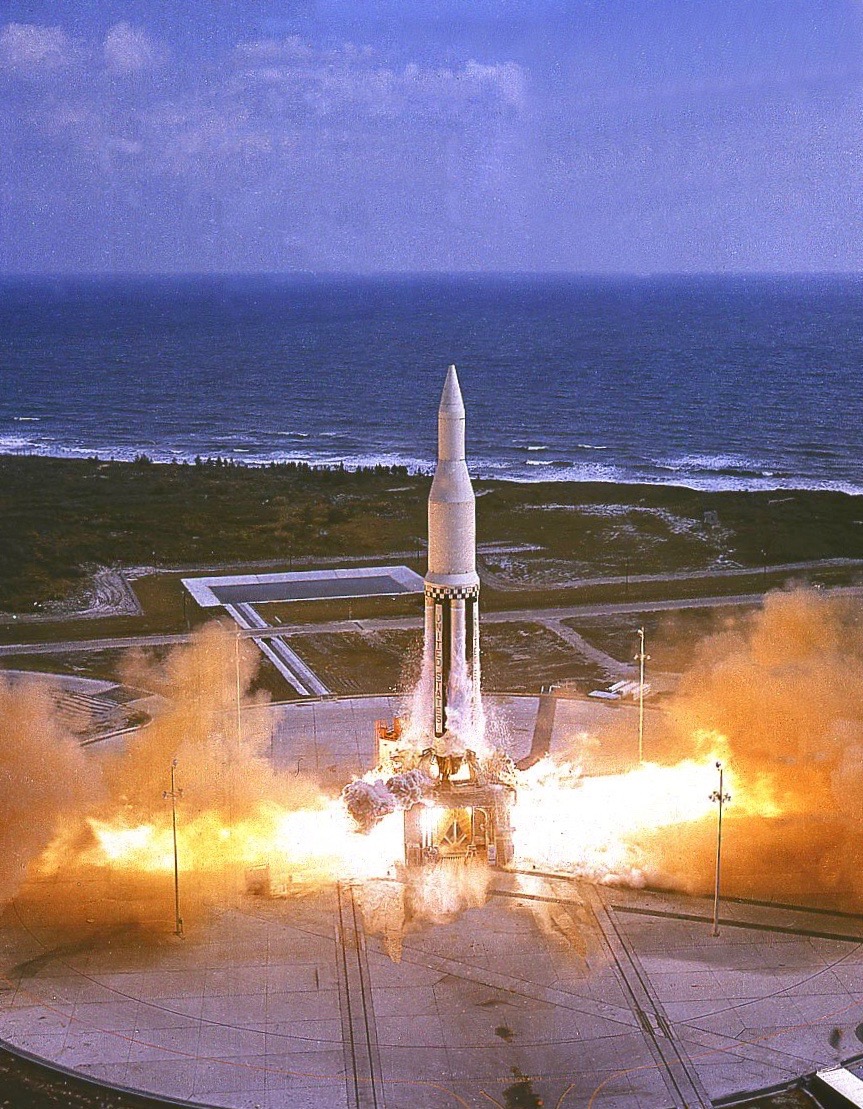
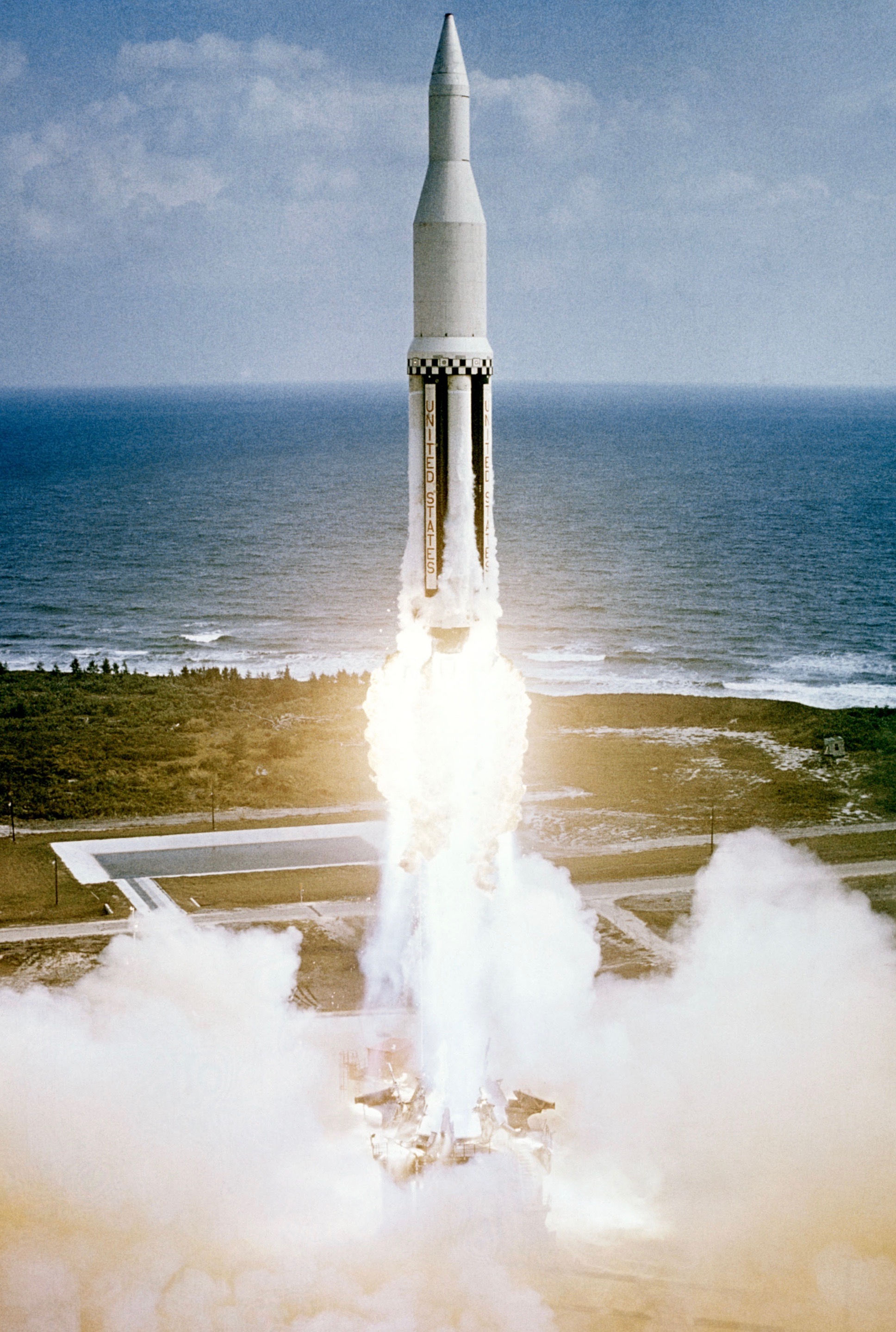
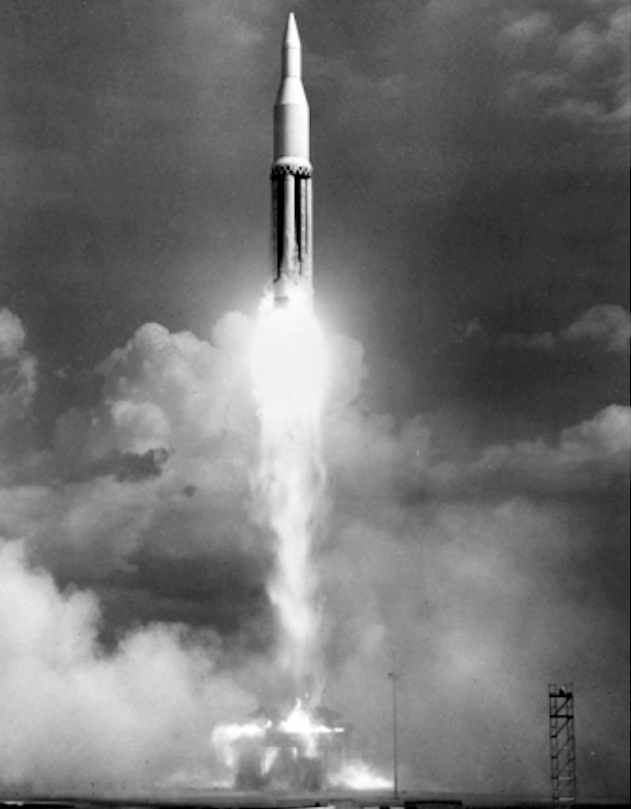
© 2018, Bryan R. Swopes
Hi Brian,
My name is Al Perreault, and I am the web author for the Calgary Recreational and Ultralight Flying Club (CRUFC) website, and am an aviation enthusiast. I have done a lot of research on Aviation History, and have been populating/updating the Wikipedia Aviation (History) Portal at https://en.wikipedia.org/wiki/Portal:Aviation/Anniversaries. If you scroll down to the bottom of the page, you’ll see a calendar for each day of the year, then by clicking on a particular date, you’ll get a comprehensive listing of aviation history for that date.
I started a daily “On this day in Aviation History” a while back on the CRUFC website, but found it to be very time consuming, so now I just link to the wikipedia page. At least other folks can edit the info I add in case I make any errors.
I had a look at your Facebook page also, and noticed that it hasn’t been updated since September.
If you are interested in collaboration or just chatting, just send me a note! I have also started an Aviation Photography magazine on Flipboard, and update it daily with all types of aviation photographs.
Al
Thanks, Al. I use the Aviation Portal as one of my sources, but find it frequently has erroneous information. I try to corroborate any facts with other sources before using them. Sometimes I try to edit (yesterday, for example, I was editing the F-4 Phantom II article, and someone else changed all my edits back to the incorrect info I had tried to correct. Frustrating. . . . I started doing this because whenever I would see some “this day in aviation history” info (from Wiki-P, or “This Week in Air Force History” or the NYC aviation site, the info would typically be so basic, usually just one sentence. I would have unanswered questions, and would then have to search for more details and find photos. Yes, it IS time-consuming. I would guess that each post has averaged about 3–4 hours, but it’s my hobby, so. . . . I appreciate you stopping by for a look at my blog and hope you like what you see. — Bryan
Hi Bryan,
That is strange that your wiki edits were changed back? The reason I put them on Wikipedia was so other Aviation Enthusiasts would revise them, making them as accurate as possible. I might start adding the history facts back on our crufc.ca website, then at least I can revise them as I get comments.
Did you figure out why your Facebook page wasn’t updating?
Al
While I was editing, I got a notice that someone else was also editing that article. I went back later and some of my changes were there, but others were back to the original.
If you click on the History button at the top you can see who reverted the changes. That makes it frustrating!
Thanks!